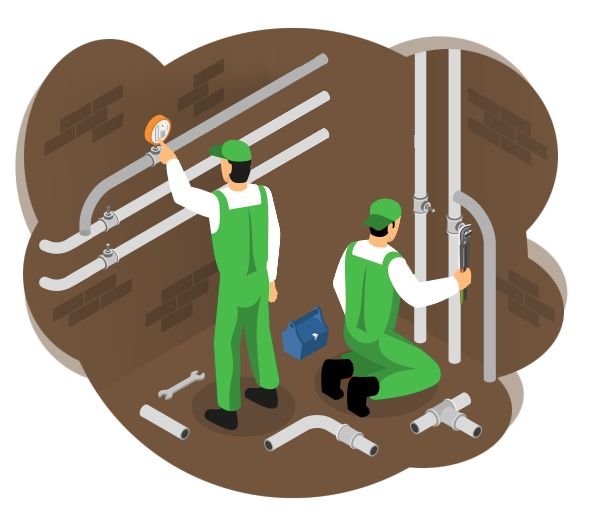When it comes to maintaining the functionality and safety of your home, keeping an eye on your plumbing system is paramount, especially in high-traffic areas like the bathroom. Regular inspections can catch potential issues before they escalate into costly repairs or water damage. In this article, we’ll delve into what you can expect during a comprehensive bathroom plumbing inspection, ensuring your plumbing remains in top-notch condition. Whether you’re a homeowner or a renter, understanding this process can help you stay proactive in preserving your bathroom’s plumbing health.
Pre-Inspection Preparation
Before the inspection begins, it’s essential to prepare your bathroom adequately. Clearing clutter, ensuring access to all fixtures, and making note of any existing issues can streamline the process. Additionally, if you have specific concerns or areas of focus, communicating them to the inspector beforehand can ensure thorough coverage during the assessment.
Visual Examination of Fixtures
The inspector will start by visually inspecting all the fixtures in your bathroom. This includes faucets, sinks, toilets, showers, bathtubs, and any additional features such as bidets or steam units. They’ll be on the lookout for signs of wear and tear, leaks, corrosion, or loose connections. Additionally, they’ll assess the overall condition of the fixtures and check for proper functionality.
Testing Water Pressure and Flow
Water pressure and flow are crucial aspects of a well-functioning plumbing system. During the inspection, the technician will conduct tests to ensure that water pressure is consistent and adequate for each fixture. They’ll also check for any signs of reduced flow, which could indicate blockages or other underlying issues within the pipes.
Examination of Pipes and Drains
Next, the inspector will inspect the plumbing behind the walls and under the sinks. This involves checking the integrity of the pipes, looking for signs of corrosion, rust, or leaks. They’ll also assess the condition of the drains to ensure they’re free of clogs or buildup that could lead to slow drainage or backups.
Inspection of Seals and Gaskets
Seals and gaskets play a crucial role in preventing leaks around fixtures and connections. The inspector will examine these components to ensure they’re in good condition and provide a tight seal. If any seals or gaskets show signs of deterioration, they’ll recommend replacement to prevent water damage.
Evaluation of Water Efficiency
Water conservation is increasingly important, and your bathroom fixtures play a significant role in water usage. During the inspection, the technician will evaluate the efficiency of your toilets, faucets, and showerheads. They’ll look for any signs of leaks or excessive water consumption and may recommend upgrading to more water-efficient fixtures to save both water and money in the long run.
Assessment of Ventilation Systems
Proper ventilation is essential in bathrooms to prevent moisture buildup, which can lead to mold and mildew growth. The inspector will evaluate the ventilation system, including exhaust fans and ductwork, to ensure they’re functioning correctly. They’ll also check for any blockages or obstructions that could impede airflow.
Documentation and Recommendations
After completing the inspection, the technician will provide you with a detailed report of their findings. This report will outline any issues discovered during the inspection, along with recommended repairs or maintenance tasks. It’s essential to review this report carefully and address any concerns promptly to prevent further damage or deterioration of your plumbing system.
Conclusion:
A bathroom plumbing inspection is a proactive step in safeguarding your home against potential plumbing issues. By understanding what to expect during this process, you can better prepare for the inspection and address any concerns effectively. Remember, regular maintenance and inspections can go a long way in preserving the integrity of your bathroom plumbing and ensuring its longevity.
Here is another article on Home Improvement
Frequently Asked Questions (FAQs):
1. How often should I schedule a bathroom plumbing inspection?
- It’s recommended to have your bathroom plumbing inspected annually to catch any potential issues early on.
2. Will I need to be present during the inspection?
- While it’s not required, it’s beneficial to be present during the inspection to ask questions and discuss any concerns with the technician.
3. What if the inspector finds a problem during the inspection?
- If the inspector identifies any issues, they’ll provide you with recommendations for repairs or maintenance. You can then decide how to proceed based on their findings.
4. How long does a bathroom plumbing inspection typically take?
- The duration of the inspection can vary depending on the size of your bathroom and the complexity of your plumbing system. On average, expect the inspection to take anywhere from 1 to 2 hours.
5. Can I perform my bathroom plumbing inspection myself?
While you can certainly conduct visual checks and basic maintenance tasks, a professional inspection offers a more thorough assessment of your plumbing system’s condition.
